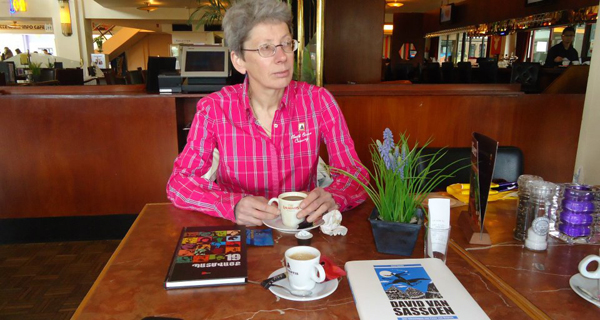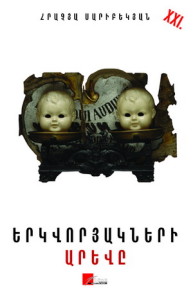 Sergei Bulgakov: “That life is a supreme reality, it is evident and certain for all those who participate in it. Nevertheless, it is a spiritual life, hidden in the “secret man,” in the “inner chamber” of his heart; in this sense it is a mystery and a sacrament. It is above nature — in other words, it exists apart from the world; still it is included within the life of the world. These two attributes are equally characteristic. From the viewpoint of the former, we say the Church is “invisible,” different from all that is visible in the world, from all that is the object of perception among the things of the world.”
Sergei Bulgakov: “That life is a supreme reality, it is evident and certain for all those who participate in it. Nevertheless, it is a spiritual life, hidden in the “secret man,” in the “inner chamber” of his heart; in this sense it is a mystery and a sacrament. It is above nature — in other words, it exists apart from the world; still it is included within the life of the world. These two attributes are equally characteristic. From the viewpoint of the former, we say the Church is “invisible,” different from all that is visible in the world, from all that is the object of perception among the things of the world.”
Arthur Machen, The great god Pan: “In every grain of wheat there lies hidden the soul of a star.”
Umberto Eco, The name of the rose: “It has been said that young wives not long wed will give birth to babies already able to speak perfectly, who will bring word that the time is at hand and will ask to be killed.”
At first sight the story of “Sun of the twins” may seem a simple one: two little boys, twin brothers, are trying to find out what happened to their father, who one day left by train and never came back. One of the boys also disappears in the course of the story, and only at the end of the book the reader will know what happened to him: the boy lay down in the middle of the railway and waited till a train ran over him. The train was high enough not to hit the boy, but he got so scared, that his heart didn’t resist and he died. His brother afterwards does the same thing, but although he is also very much scared by the noise and the tremendous dimensions of the train running over him, his heart turns out to be strong enough to bear the fear, only from fright his hair turns all white, like the hair of an old man.
 The boys’ grandfather is so tired of life and so full of sorrow for the disappearance of his son and the death of his grandson, that he blinds himself not to have to see the world around him anymore, as some kind of partial suicide.
The boys’ grandfather is so tired of life and so full of sorrow for the disappearance of his son and the death of his grandson, that he blinds himself not to have to see the world around him anymore, as some kind of partial suicide.
At some point the father of the boys seems to have returned home, but he is not able to speak anymore. After a while it becomes clear, that he is not the father who has come back home, but the uncle, the father’s twin brother, who is a priest and has shaved off his beard and taken off his priest’s clothes, which makes him look exactly like the father of the boys.
The story shows the world as seen through the eyes of a child, who is wondering about everything, trying to find an explanation for all the things he doesn’t understand. This invites the reader to return to his own childhood, and forces him to look again at the world in the fresh, childish way , and to take existing reality no longer for granted, but constantly ask: “why” and “how”?
The world of “Sun of the twins” is the world as we know it, and at the same time it’s another, magical world, in which anything can happen. Sometimes it is difficult to tell which part of the book is real, and which part is result of Saribekyan’s fantasy. As unrealistic as it may seem to the reader, for instance, that the playground of a nursery-school could be made at the edge of a cliff, this is, however, a description of a real nursery-school in a small village in the mountains of Armenia. And that the uncle of the boys, the priest, grows a garden on the roof of his church, is also not as implausible as it seems, as there are many old Armenian churches with plants and even small trees growing on their roofs.
This whole story is imbued with symbolism, which makes you want to read the book several times, because every time you read it, you will discover new elements. It is a book, that stays with the reader for a long time after having finished reading it.
The sun from the title is omnipresent in the book. In contrast to the usual idea of the sun as life-giving, the sun of the twins is almost identical to death. An unbearably hot sun, that seems to be unalterably fixed in the middle of the sky, paralyzing life all around. The adults are afraid of the midday sun and prefer not to come out of their houses. Only the children of the small Armenian village ignore the threat of the sun, the threat of death, considering their plays much more important than that.
Although on the first page of the book the writer tells how the mother of the boys is hanging the laundry outside, putting two identical t-shirts side by side every time, by which becomes clear at once that the boys are twins, nevertheless, the reader starts doubting the existence of the twin brother. The main character, Arek (whose name – of course not accidentally – means ‘sun’), sees and hears his brother, and talks to him, but others don’t seem to see him. So you start thinking: maybe the twin brother is just the alter ego of the main character, that is doing all the daring and the bad things Arek only thinks about, but is too shy, too polite or too afraid to really do? Or maybe he is just an imaginary friend, like so many small children invent for themselves? The existence and meaning of twins is another important theme of Saribekyan’s book. If two persons are genetically identical, are they really two different persons, or are they just two versions of one and the same person? What makes a person into an individual? When the uncle of the boys takes off his priest’s clothes and shaves off his beard, does he really become the father of the boys?
Besides the sun and the twins, as the two leading themes, the book contains a lot of secondary themes or symbols, which can be interpreted in different ways, leaving it up to the reader to choose his or her own interpretation.
There is, for instance, the tunnel, that can be just an ordinary train tunnel through a mountain. But at the same time the railway tunnel is a passage to a parallel world, where there exists an altered copy of every person in our world. Or it is the passage to afterlife; whoever passes through it, will never come back, as happened to the father of the twins.
Related to the themes of the tunnel and the twins is that of the mirror. The mirror duplicates the person who is looking at himself, and the world he is standing in. But is the person you see in the mirror really you, or is it someone else? Does a mirror change something essential in whatever it reflects, creating another world with other persons in it?
“Sun of the twins” is a book that creates a certain state of mind in the reader, both pleasant, because it takes us back to our childhood with its brightness and its plays, and in a way frightening, because it takes away the comfort of certainties about the world that surrounds us. It gives a lot to think about.


1 comment
H. Saghatelyan says:
Feb 12, 2015
Awesome.